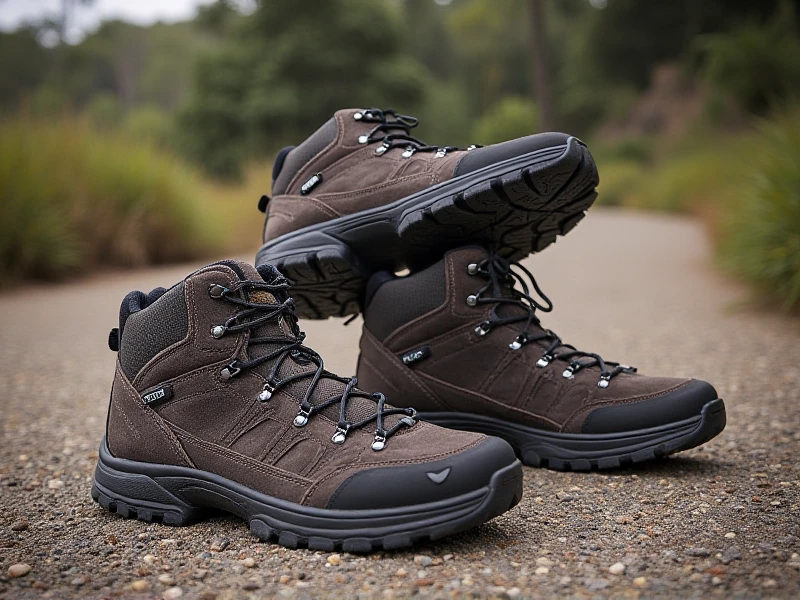The Ultimate Guide to Finding Your Perfect Pair of Men's Hiking Shoes
2025-06-04

Choosing the right men's hiking shoes isn't just about comfort; it's about safety, performance, and unlocking unforgettable adventures. With countless options flooding the market, finding the ideal pair tailored to your needs can feel daunting. This guide breaks down everything you need to know to make an informed decision and hit the trails with confidence.
Why the Right Men's Hiking Shoes Matter
Your feet are your foundation on the trail. Ill-fitting or inadequate footwear leads to blisters, fatigue, rolled ankles, and a miserable hike. Men's hiking shoes serve crucial purposes: protecting your feet from rocks, roots, and moisture; providing stability on uneven terrain; and delivering essential grip to prevent slips. Investing in well-designed hiking footwear prevents injury and maximizes your enjoyment of the outdoors.
Key Considerations When Buying Men's Hiking Shoes
1. Terrain & Distance: Your adventures dictate the shoe type.
Day Hikes/Light Trails: Low-cut hiking shoes offer agility and breathability. Ideal for groomed paths and shorter distances.
Moderate Trails/Backpacking: Mid-cut hiking boots provide enhanced ankle support and stability for carrying loads over varied terrain.
Rugged Terrain/Heavy Backpacks: High-cut hiking boots deliver maximum ankle support, protection, and durability for challenging conditions and multi-day trips.
Off-Trail/Scrambling: Approach shoes offer climbing-inspired sticky rubber soles for traction on rock surfaces.
Fast & Light/Trail Runners: Prioritize speed and weight on maintained trails.
2. Essential Features to Prioritize:
Traction & Outsoles: Look for deep, multi-directional lugs made from high-quality rubber (e.g., Vibram®). Consider lug pattern depth and spacing – widely spaced lugs shed mud better. A defined heel brake enhances downhill control.
Support & Midsole: Varies significantly. Firmer midsoles offer stability and protect against rocks but can be less cushy. Softer midsoles increase comfort on long paths but may sacrifice some support. Get what matches your weight, pack load, and support needs.
Fit & Comfort: This is non-negotiable. Shop in the afternoon when feet are slightly swollen. Wear intended hiking socks. Ensure about a thumb's width between your longest toe and the shoe's end. Heel should lock down without slippage. Width is crucial – many brands offer wide options. Note that men's hiking shoes often have roomier toe boxes than regular footwear.
Waterproofing: Breathable membranes like Gore-Tex® keep feet dry in wet conditions but add cost and warmth. Non-waterproof shoes offer superior breathability in hot/dry climates and drain/dry faster if submerged – perfect for summer hikes or desert trails. Decide based on primary usage.
Durability & Upper: Materials matter. Full-grain leather is supremely durable and protective but heavier. Split-grain leather/Nylon mixes offer lighter weight and breathability at the expense of some durability. Synthetic overlays add abrasion resistance. Ensure toe caps are protective.
Weight: Lighter shoes reduce fatigue but may compromise support and protection on technical terrain. Heavier mountaineering boots excel in harsh conditions but are overkill for a local nature walk. Strike your personal balance.
Breathability: Mesh panels promote airflow, crucial for preventing sweaty feet in warm weather. Waterproof shoes trade some breathability for protection.
Popular Styles & Materials
Trail Running Shoes: Ultra-lightweight, flexible, great cushioning. Minimal ankle support, best for fastpacking or light trail use.
Low-Cut Hiking Shoes: Versatile, offering agility and reasonable support. Perfect for well-maintained trails and day hikes.
Mid-Cut Hiking Boots: The sweet spot for many, offering ankle support suitable for varied terrain and moderate backpacking loads. Common materials include synthetic/nylon mixes or nubuck leather.
High-Cut Hiking Boots: Built for demanding trails, heavy loads, and maximum protection. Often feature premium full-grain leather and heavy-duty construction.
Approach Shoes: Low-cut profile with sticky rubber soles designed specifically for hiking routes that include scrambling or rock climbing sections.
Caring for Your Investment
Extend the life of your men's hiking shoes:
1. Post-Hike Cleaning: Brush off mud and debris with a soft brush. Rinse with lukewarm water if necessary. Never put them in the washing machine or dryer!
2. Drying: If wet, remove insoles and laces, stuff loosely with newspaper, and let them air dry naturally away from direct heat sources.
3. Conditioning (Leather): Periodically apply a quality leather conditioner to prevent drying and cracking. Avoid petroleum-based products on nubuck or suede. Use specialized sprays instead.
4. Waterproofing Renewal: Treat waterproof boots regularly with manufacturer-recommended sprays (e.g., Nikwax®).
5. Storage: Keep in a cool, dry place away from sunlight. Avoid compressing them.
Finding Your Best Fit
The best way to find your perfect men's hiking shoes? Visit a reputable outdoor retailer with knowledgeable staff. Describe your hiking style, terrain, and any past fit issues. Try on multiple pairs and sizes. Walk on an incline board if available. Trust your comfort immediately; don't expect a "break-in" period to fix significant discomfort. Brands like Merrell, Salomon, Keen, Oboz, Lowa, and Vasque offer excellent ranges catering to different feet and activities.
Step Forward with Confidence
Your journey begins with what's on your feet. By understanding the terrain you'll conquer, prioritizing critical features like fit, support, and traction, and investing in quality men's hiking shoes, you set yourself up for miles of comfortable, enjoyable, and safe exploration. Research thoroughly, try on diligently, and get ready to experience the trails like never before. The path awaits – go find your perfect pair. Your feet will thank you.
Category: